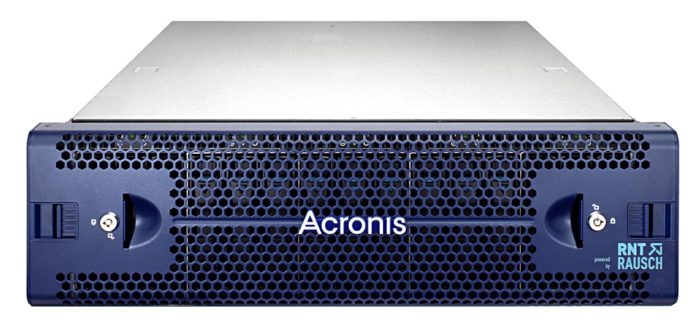Acronis has added snapshots, better networking and service provider support to the company’s hyperconverged backup target appliance.
Acronis Cyber Infrastructure is the new name for its HCI protection appliance software for enterprises and service providers. It was formerly known as Acronis Storage and Acronis Software-Defined Infrastructure, and it is a combined backup and security offering.

V3.0, the latest upgrade, features:
- Self-service portal for resource provisioning to end customers in multi-tenant systems with isolation between independent workloads and projects operating in a shared environment.
- Application-consistent snapshots of Linux and Windows virtual machine volumes.
- Flexible virtual networking with support for virtual routers, Source Network Address Translation (SNAT), static routes, and floating IP addresses.
- High availability for virtual machines with automatic workload restoration in case of mode failure.
- Acronis Backup Gateway geo-replication with asynchronous replication and failover between two ACI 3.0 clusters.
- High availability management panel for Acronis Cyber Infrastructure Storage Appliance and improvements to appliance’s configuration wizard.
Acronis said ACI 3.0 enables partners and customers to improve the performance and stability of their infrastructure, and lower operating costs with flexible licensing. It adds support for virtual private cloud, hybrid cloud, managed private cloud, and hybrid storage use cases.
ACI has no deduplication or compression. An Acronis spokesperson said that: “As far as this appliance is used for storing backups from Acronis Backup, backup archive has deduplication and compression.”
The geo-replication feature uses S3 to send data to another appliance or an S3 target in the public cloud or on-premises.
Blocks & Files asked how the ACI appliance compares to Data Domain and Exagrid. Acronis said: “Our appliance has [an] unprecedented level of fault tolerance and high availability.” For example, with a 5-node system and a failure of 2 nodes, customers will not lose any data or access to data.
Check out the full software feature list in the ACI v3.0 release notes.








